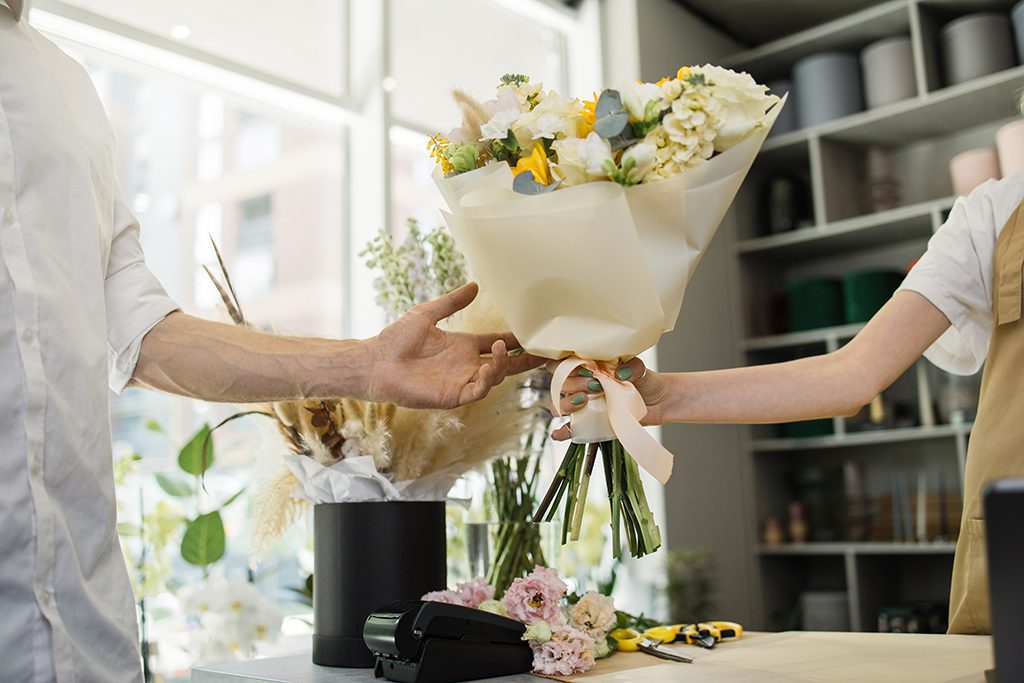
On Valentine’s Day, two customers shopping for arrangements at Meadowscent flower shop questioned owner Theresa Colucci, AAF, AIFD, PFCI, about the environmental impact of the flowers she uses at her Gardiner, New York business.
“People are talking about it,” Colucci says. “They want to know how working towards sustainability.”
She had what she described as a constructive conversations with those customers, who she suspects had read recent opinion pieces in two major media outlets attacking the floral industry’s carbon footprint (the pieces contained misleading or inaccurate information, to which the Society of American Florists responded).
The scenario underscores the need for florists to be prepared to talk about sustainability practices in the industry — especially as Mother’s Day approaches.
With that in mind, SAF has compiled talking points for frequently raised topics related to sustainability.
Where do flowers come from?
More than 80% of fresh cut flowers are imported into the U.S. from Colombia and Ecuador. There are also thousands of flower farms across the U.S. producing flowers such as waxflower, protea, irises, tulips, ranunculus, sunflowers and more. Many florists buy locally when they have access to seasonal flowers.
What’s the carbon footprint of imported flowers?
A recent study found that the carbon footprint of one rose grown in Colombia and flown to Miami was about the same as a chocolate bar or cup of coffee.
That footprint is shrinking. Industry advocates in Colombia have struck a deal with cargo airlines to reduce CO2 emissions this year by using 31,314 pounds of sustainable aviation fuel, a type of fuel made from plant or animal materials instead of fossil fuels. This type of fuel produces significantly less greenhouse gas emissions than traditional jet fuels.
Sea shipping is also on the rise thanks to recent advances in flower care and handling. Last year flower imports from Colombia and Ecuador to PortMiami surged by 28.4% from 2022 (428 million stems, up from 333.2 million), according to data from the port.
In addition, many floral companies are offsetting their carbon footprint by utilizing solar energy and biodigesters, which break down organic material in a closed system, capturing gases which are used as a source of power. Many companies also financially support wind or solar projects, planting trees and engaging in other efforts to conserve ecosystems. Colombian farms have offset an additional 5,314 metric tons of CO2 equivalent emissions in one year through reforestation projects.
Are pesticides used?
Flower growers in the U.S. and other countries make environmental sustainability a priority. In Colombia, most growers have earned international certification labels. This requires an ongoing commitment to sustainable farming through the minimal use of agricultural chemicals, approved for use in the U.S. and Europe, and natural ways to control pests and disease, such as biological controls (good bugs eating bad bugs), beneficial fungus and bacteria to enhance soil, or plant extracts that deter bugs.
In the past 25 years, farms certified by Floraverde have reduced the consumption of highly toxic pesticides by 99.7%, while increasing biological controls by 600% in the past 10 years.
Breeders are also contributing to less chemical use by developing flowers that are more disease and pest resistant.
Are the farm workers treated well and paid fairly?
Flower and plant buyers can feel good about social sustainability practices at the farms in Colombia and Ecuador, where labor legislation — including a minimum wage — is strict and enforced. In fact, workers have benefits including paid medical leave, maternity and paternity leave, and universal health coverage — and also free camps for kids, zero-interest loans, savings accounts with an employer match, free meals, wellness breaks and more.
Florverde farms employ 46,000 workers, the majority of whom are female heads of households.
Looking for more information on sustainability in the floral industry? Check out this collection of resources in SAF’s Floral Education Hub — and don’t miss Floral Management’s Sustainability Spotlight.
Amanda Jedlinsky is the senior director of content and communications for the Society of American Florists.

